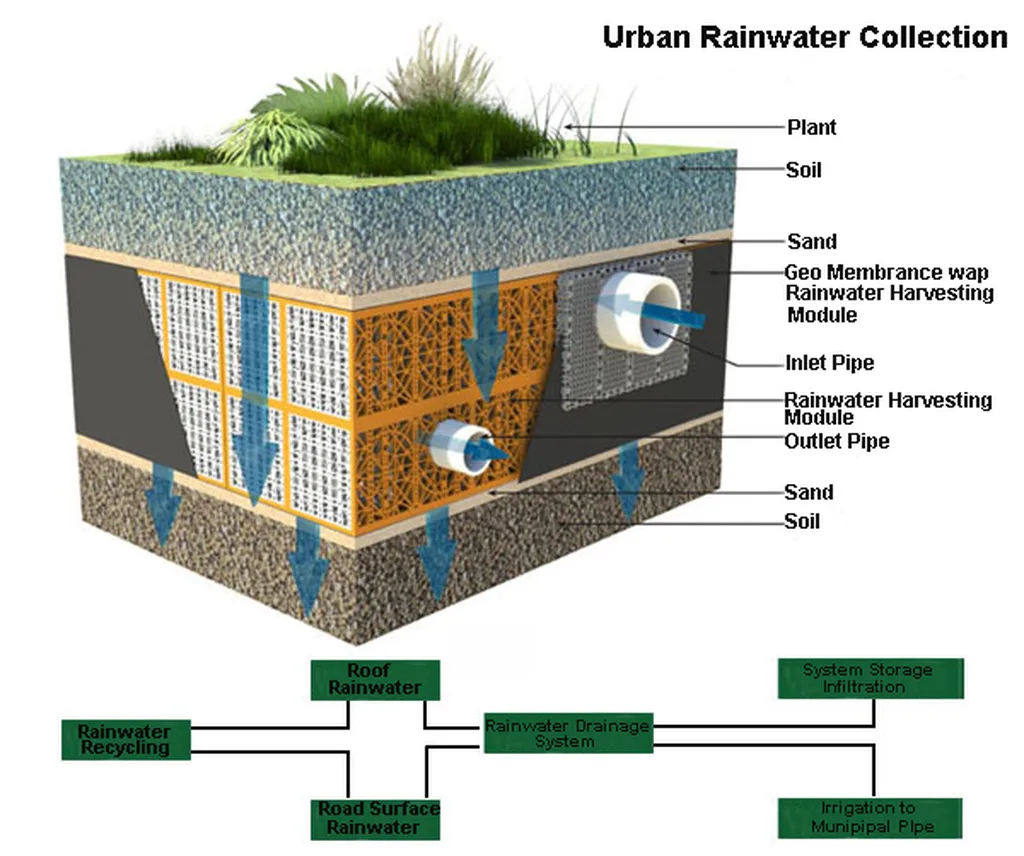In the bustling, rain-soaked city of Chattogram, Bangladesh, a novel approach to urban resilience is taking root— quite literally. Researchers, led by Aysha Akter from the Department of Civil Engineering at Chittagong University of Engineering & Technology (CUET), have been exploring the potential of green roofs to combat urban flooding and harness rainwater. Their findings, published in the journal *Cleaner Water* (translated as “Purer Water”), offer a promising blueprint for cities worldwide grappling with climate change and rapid urbanization.
Akter and her team turned to the Storm Water Management Model (SWMM) to simulate the impact of green roofs on Chattogram’s drainage system. Using ten years of rainfall data and advanced geospatial tools like Google Earth Engine and GIS, they analyzed the rooftops of 6,584 buildings, classifying them according to the Bangladesh National Building Code (BNBC) 2020. The study evaluated four types of green roof configurations, supported by 2D and 3D visualizations to aid spatial planning.
The results are striking. Green roofs, a form of Low Impact Development (LID), can significantly reduce surface runoff, with an annual reduction of 752,800 cubic meters of water. This not only mitigates flooding but also delays peak flows, giving urban drainage systems a fighting chance during heavy rainfall.
“A key finding of our study is that storage-related parameters, particularly soil thickness and field capacity, play a crucial role in determining the effectiveness of green roofs in reducing runoff,” Akter explains. This insight could guide future designs and implementations, ensuring maximum benefits.
Beyond flood control, green roofs offer a suite of co-benefits. They contribute to urban cooling, a critical factor as cities grapple with the heat island effect. They also enhance biodiversity, creating pockets of green space in concrete jungles. Moreover, the harvested rainwater can be reused, offering a sustainable water source for various applications.
For the energy sector, the implications are substantial. Urban cooling can reduce the demand for air conditioning, lowering energy consumption and costs. Additionally, the integration of green infrastructure into urban planning aligns with the growing trend of sustainable and resilient city development, a market poised for significant growth.
The study underscores the importance of enabling policies. Akter emphasizes the need to incorporate green roofs into building codes like the BNBC, paving the way for climate-resilient urban development. “Our findings highlight the scope of integrating green infrastructure into urban planning,” she says, a call to action for policymakers and urban planners alike.
As cities worldwide face the dual challenges of climate change and urbanization, the insights from Akter’s research offer a beacon of hope. By embracing green roofs and other forms of LID, cities can enhance their resilience, reduce energy demands, and create more sustainable, livable spaces. The journey towards a greener, more resilient urban future starts from the rooftops, one green roof at a time.

